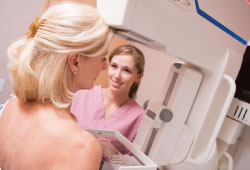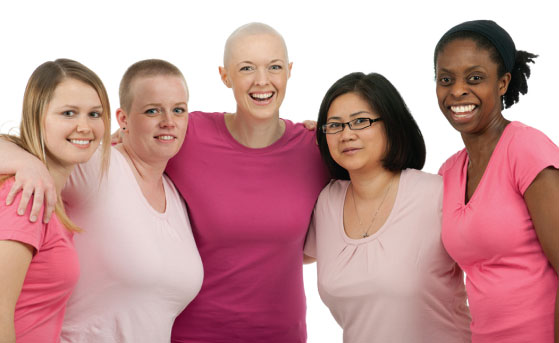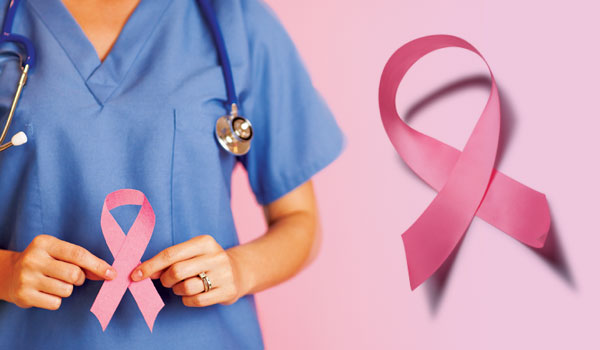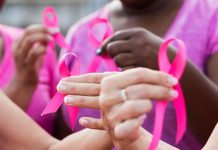No woman wants to receive a breast cancer diagnosis, but hearing the words “breast cancer” doesn’t always mean an end. It can be the beginning of learning how to fight, getting the facts and finding hope.
During the month of October, the world is encouraged to consider the life-altering consequences of breast cancer, which affects a scary statistic of one in eight women. It’s a terrifying illness that unfortunately many women fall prey to through no fault of their own, taking mothers, daughters, wives and friends.
However, all is not lost. By annually dedicating a month of the year to this type of cancer, women worldwide are made more aware of how they can check for symptoms, receive the correct treatment course and seek the help needed.
There are many ways in which doctors claim women can reduce the likelihood of developing breast cancer, just as there are constantly further developments in fighting the disease. And of course the vast support available has shown to be incredibly beneficial to sufferers.
In support of these ventures, we have consulted three experts to find out how women can prevent, treat and receive the proper support needed if breast cancer develops.
STEP 1: Prevention
Our expert: Dr Sanjay Gupta, head of the breast clinic at American Mission Hospital.
Every woman wants to know what she can do to lower her risk of breast cancer. Some of the factors associated with breast cancer can’t be changed, however other factors are your choice. “By choosing the healthiest lifestyle options possible, you can empower yourself and make sure your breast cancer risk is as low as possible,” explains Dr Sanjay.
“Your doctor should accurately assess your level of breast cancer risk to help you come up with a plan to lower your risk. This can also influence recommendations about breast cancer screening — what tests to have and when to start having them.”
Maintain a healthy lifestyle
Being overweight can increase the risks of breast cancer, especially for women after menopause. “Fat tissue is the body’s main source of estrogen after menopause, when the ovaries stop producing the hormone. More fat tissue means higher estrogen levels, which can increase breast cancer risk,” he says.
A controlled diet is key; an eating plan rich in fruits and vegetables is generally recommended. Additionally, evidence is growing that exercise can reduce the risk. The American Cancer Society recommends 45-60 minutes of physical exercise five or more days a week.
Limiting alcohol consumption will also help as this limits your liver’s ability to control blood levels of the hormone estrogen, which can, in turn, increase risk.
Pregnancy benefits
The processes of pregnancy and breastfeeding have been proven to reduce the overall number of menstrual cycles in a woman’s lifetime, and this appears to reduce future breast cancer risk.
“Birth control pills appear to slightly increase a woman’s risk for breast cancer, but only for a limited period of time. Women who stopped using oral contraceptives more than ten years ago do not appear to have any increased breast cancer risk,” Dr Sanjay states.
The importance of self-examination
Probably the best way to fight breast cancer is by immediately consulting a doctor should you notice a lump in one of your breasts. By doing this, you can immediately start the course of treatment required and begin a recovery plan.
“It is important that every woman checks her breast for abnormal lumps regularly — at least once a month. We advise that women become familiar with the normal consistency of their breasts and underlying tissue, so that any new changes that arise will be noticeable,” suggests Dr Sanjay.
STEP 2: Treatment
Our expert: Dr Stephen Angamuthu, consultant general and laparoscopic surgeon at the Royal Bahrain Hospital.
 If it is clarified that a woman does in fact have breast cancer, it is highly advisable to have an idea of the type of treatment courses available. There are many different types, each suitable for the unique patient and their cancer’s progression rate.
If it is clarified that a woman does in fact have breast cancer, it is highly advisable to have an idea of the type of treatment courses available. There are many different types, each suitable for the unique patient and their cancer’s progression rate.
This can all be incredibly overwhelming, which is why a woman with cancer will be advised by her doctor on the correct treatment path to follow. However, the ultimate choice of which type to opt for will be the patients own.
Surgery, chemotherapy, radiotherapy or hormonal manipulation are the most common treatment methods, depending on the type and stage of the cancer.
When surgery is an option
Early detection of breast cancer can save lives. “With patients that have small tumors or are in the early stages of breast cancer, surgery is the most viable option,” says Dr Stephen. “Often surgery at this stage can result in completely ridding the breasts of the cancerous lump(s) and sometimes no chemotherapy is even required.”
The most common types of surgery are a mastectomy, which is the removal of all of the breast tissue, or a lumpectomy, which is the removal of only the tumor and a small amount of the surrounding tissue.
Undergoing chemotherapy
If chemotherapy is required, the course you embark on will be meticulously considered to suit your body type and the stage your cancer is in. It works by using medicine to weaken and destroy cancer cells in the body, including cells at the original site and any cells that may have spread throughout the body.
“Chemotherapy is commonly used to treat advanced-stage breast cancer,” explains Dr Stephen. “Most standard chemotherapy regimens include a combination of two or more medicines from anthracyclines and taxanes. Depending on the characteristics of the cancer, a targeted therapy medicine, such as herceptin, may be used in combination with some chemotherapy regimens.”
Choosing targeted therapies
Target therapy medicines can be an option for women. Specific characteristics of cancer cells are targeted, such as a protein that allows the cancer cells to grow in a rapid or abnormal way.
“Some breast cancers have protein (receptors) called HER2. Drugs like Herceptin get attached to this receptor containing cells and kill the cells. These drugs are used in combination with other chemotherapy drugs and are more effective on tumors,” says Dr Stephen. “Pregnant women should not undergo targeted therapies, as research has shown that such treatment is not safe for both mother and child.”
STEP 3: Support Network
Our expert: National Breast Cancer Foundation, www.nationalbreastcancer.org.
The lengthy process of fighting breast cancer is intense, draining and exhausting. Anybody who believes in ‘mind over matter’ will realise the extreme importance of having a support system when going through this journey. Most importantly, sufferers need to know that they are not alone.
All over the world, there are thousands of programmes and services to provide coping mechanisms in every way possible. There are professionals and volunteers on hand 24/7 both virtually and in reality to offer words of wisdom, comfort and strength.
Receiving support virtually
If a woman with breast cancer isn’t yet ready to discuss her battle with friends, family or support groups, another option is accessing online blogs and forums. Doctors advise cancer patients to reach out to anyone, and following someone else’s story from a distance could be the right approach for some women.
On the ‘community’ section of the National Breast Cancer Foundation (NBCF) site there are all manner of ways you can get in touch with other people who have gone through breast cancer, including blogs, videos, live chats and forums. The site also offers a resource library, where professional treatment advice is given.
Joining a support group
Some women feel more comfortable seeking support from someone who has gone through a similar experience, which is where a support group is an ideal source of support. Studies have shown that breast cancer patients enrolled in a support group have better quality of life, including improvements in mood, ability to cope and reduced levels of stress.

The significance of leaning on friends and family
It is our friends and family that have always and will always be there for us, making them probably the best people a breast cancer sufferer can turn to. Although a family member or friend may not have been through cancer, they know the sufferer better than any doctor and can provide both emotional and practical support in day-to-day life.
By educating and counselling family and friends, the sufferer will be able to receive all of the support needed and the overall quality of life will be increased.





































